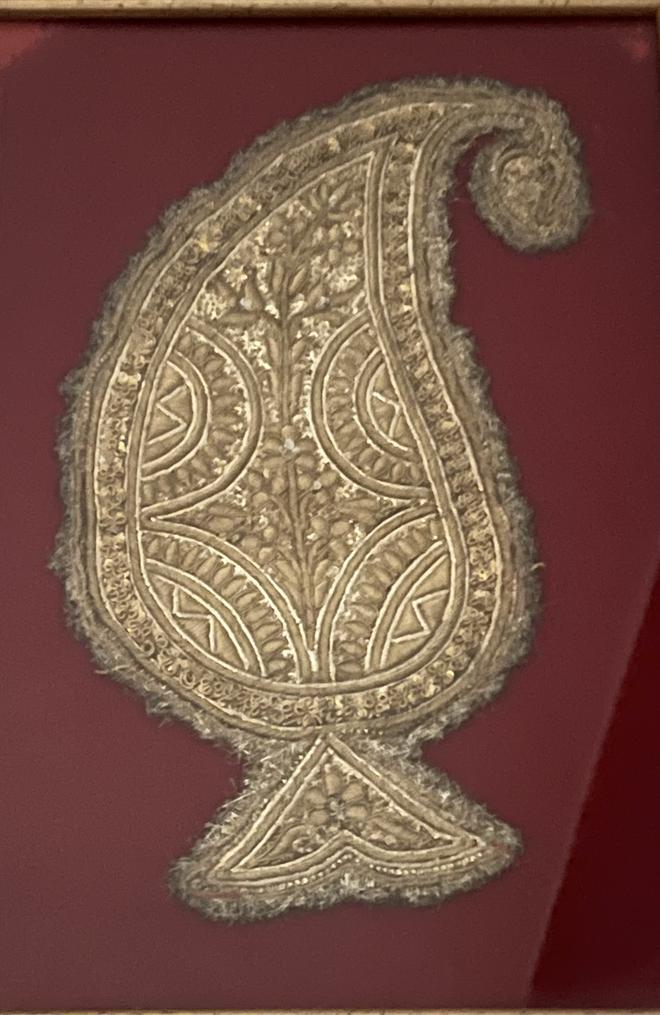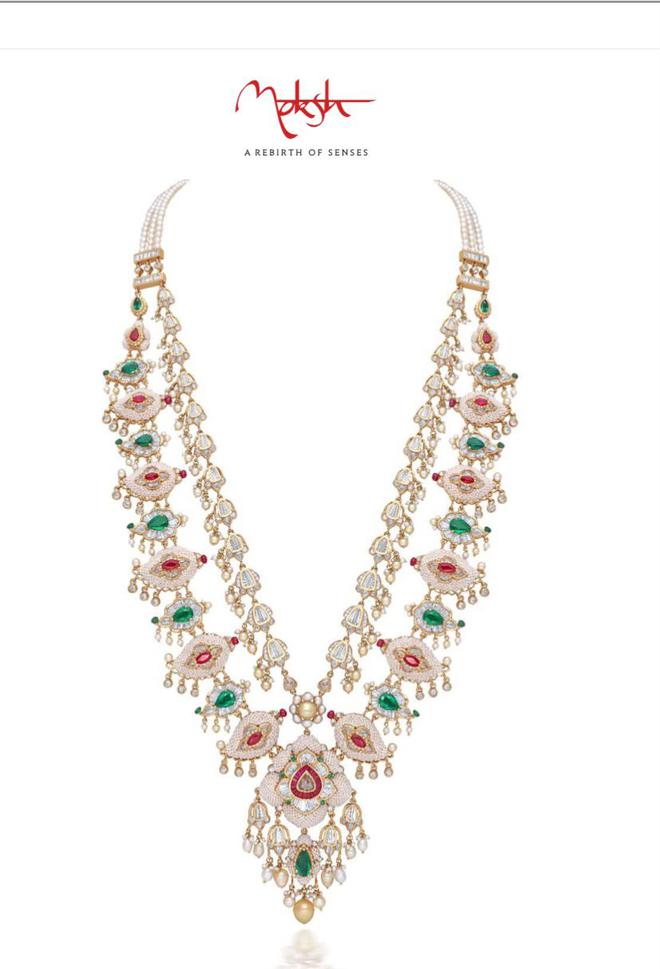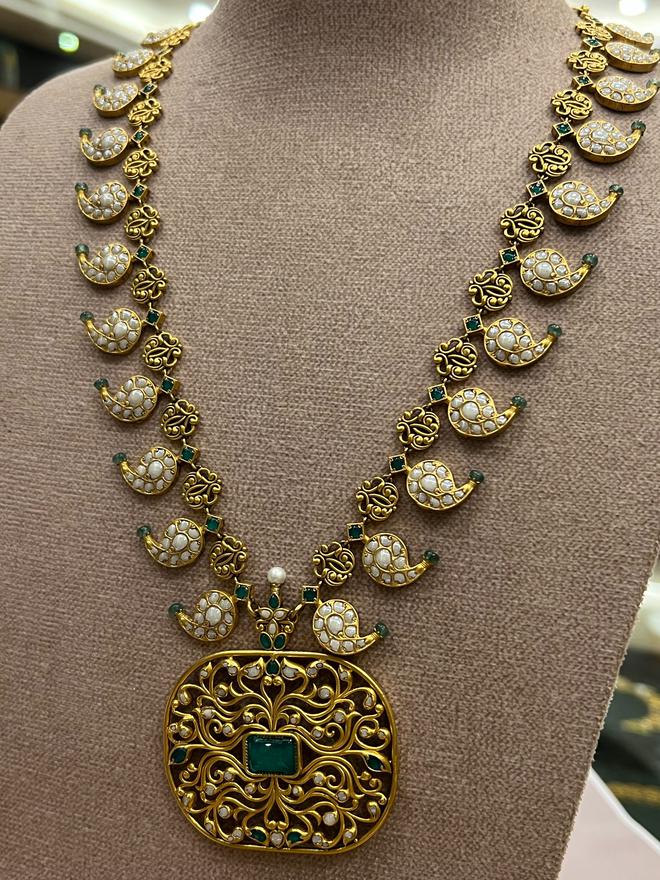If summer is here, can the mango be far behind? Not just on our plates but also as a motif on textiles and other crafts. The fruit is deeply embedded in our ethos, says Anamika Pathak, in her 2021 dissertation, Mango-kairi-kalka-paisley: Design in Indian Art from Architecture to Textiles. The former curator of National Museum, Delhi, writes, “The sweetness of the fruit inspired the farmers to produce; the shape inspired our metal ware artists to make boxes, huqqa etc and, as motif, it appeared on panel decoration.”
Textile expert Purvi Patel, who recreated lost embroidery from the early to mid-19th century, says that the mango has lent itself to interesting designs thanks to interventions by and perceptions of different communities. “Every designer will create something around the mango as a prop.”
According to her, Kashmir’s sleek long mango motif that came to be called the paisley has a West Asian origin. Historically, embroidery was brought to Kashmir from Persia at the behest of, first, the 13th century Muslim saint Shah-i-Hamdan, and then the 15th century emperor Badshah (Sultan Zain-ul-Abidin). “In Persia, there is a motif called maada baccha, which has a big mango motif interwoven with a smaller one. The big one is called maada (mother) and the small one is (child). This is found on carpets, shawls and saris. When Kashmiri shawls were gifted to the British, the motif went to Europe, where imitation shawls were made. Paisley, a town in Scotland, became famous for making imitations of the sleek mango design,” she explains.
In Gujarat, the motif mimicked the local variety with a broad round base, which were woven on Ashavali saris at several Mughal karkhanas (factories) located on the outskirts of Ahmedabad. Purvi points that mangoes were the most favoured motifs in textiles, Gujarat also had other popular ones such as mynah, parrot, peacock and creepers.

In the old weaving centre of Banaras, the motif appears on the muslin jamdani fabric, which was favoured by the nawabs of Awadh and Lucknow. On the courtly jamas or long kurta, the mango motif appeared in a distinct pattern called choga, whereas, the saris showcased the lovely konias in the corner of the pallu.
According to Purvi, the Balucheri weavers of West Bengal “completely took over the motif, tweaked it and blended it with birds and flowers”. She cites the exquisite examples of Balucheri saris displayed at the Craft Museum in Delhi and the V&A in London.
Down south, in the famous Kanjivaram saris, the motif is found not just on the border and the pallu (called mundhanai in Tamil) but also as small buttas dotting the body, says Sreemathy Mohan, Chennai-based textile researcher and enthusiast. In South India, the mango is stockier and more stylised whereas the Kashmiri version and the paisley have longer curves.
“The pattern is abundant in Indian textiles,” says Shruthi Prajosh, who runs a Kalamkari boutique in Kochi. “Be it in prints (Bagh, Bagru, Kalamkari), in embroidery forms such as Kantha or Lambani or traditional weaves like Banarasi, Kanjivaram, or jamdanis.” Her personal favourite is the konia of Banaras in which three paisleys in the corner of the pallu, typically known as the dancing paisley. “Beyond the visual aesthetics, the motif is celebrated as the symbol of life and eternity.”
In jewellery
Apart from textiles, the motif is also part of traditional Indian jewellery. The earliest records of the mango in jewellery comes from first century Taxila (armlet, necklace and headgear). A common composition was a flower made from a cluster of four small mangoes. During the Mughal period, the sarpench or brooch on the turban also had the mango as its main motif.


Today, the ancient motif is being interpreted in a contemporary fashion. Kochi-based jewellery designer Asha Sebastian Matthatil says, “The traditional motif needs a modern makeover to catch the fancy of the millennial.” Her designs of the mango for today’s generation includes filling the mango shape with luminous pearls or with a variety of stones, a neck piece with mango cut-outs in gold filigree and replacing the twin inverted mango pendant with non-traditional shape silhouettes with mangoes placed around the bevelled rectangle.
Moksha, a brand known for detailed diamond jewellery, has designed a necklace with the mango motif encrusted with round, keshi pearls, baguettes, rubies and emeralds. “Paisley is one form that spells India,” says Meenal Choksi, designer Moksha. Purvi cites the famous manga malai, the traditional necklace in a bridal trousseau in South India. “As trade from South India brought in precious gems like rubies and emeralds, one finds that the mango was the most popular motif engraved on them.”
In architecture
The fruit is also celebrated in wood. The wooden panels of the havelis and homes of Pethapur in Gujarat showcase the mango. Purvi points out that mango leaves were also popular as a pattern
According to Anamika, the mango’s deep connection with Indian culture and way of life has inspired artisans down the ages to use the fruit as a motif in different arts. “Another possible reason is its shape, colour, texture. It gives them the flexibility to work upon different compositions,” she says.







